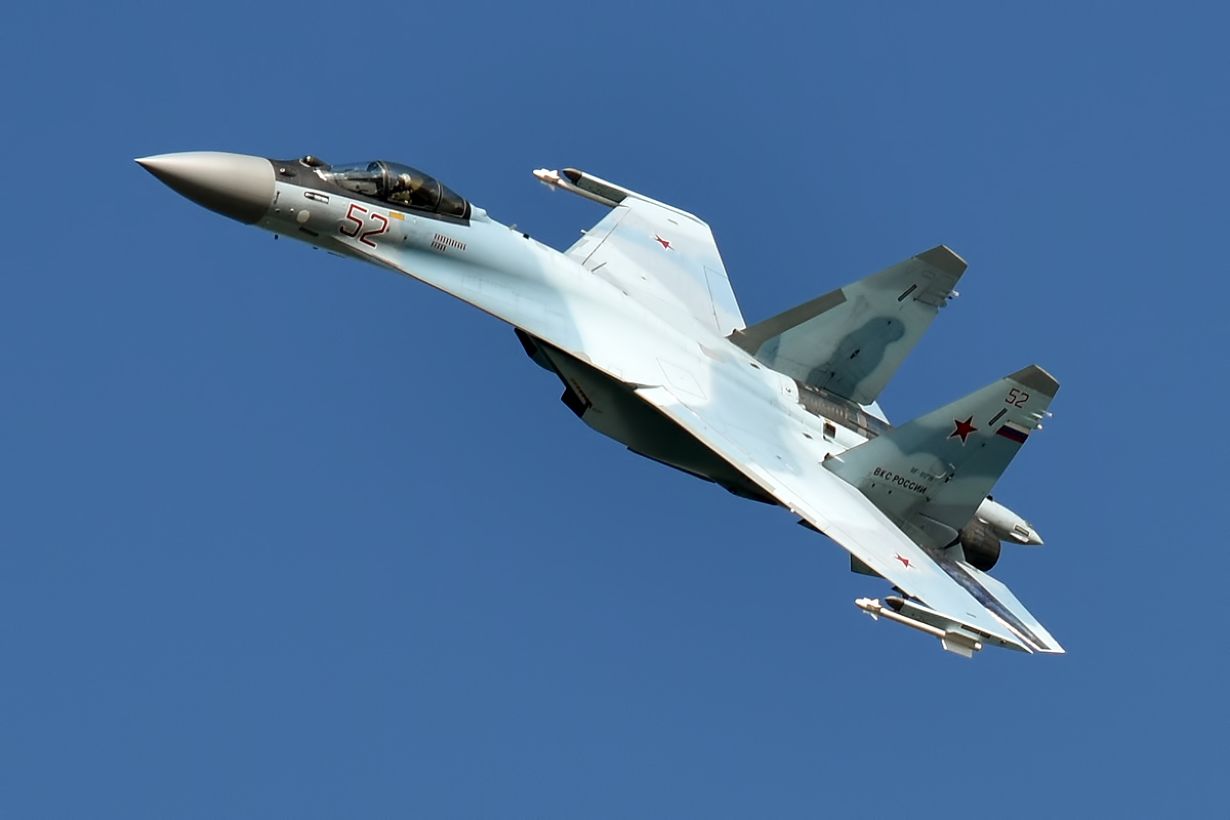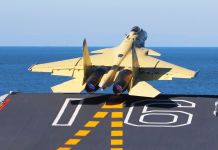Days after Iran unveiled its vehicle-launched Meraj-532 kamikaze drone, a military expert explained that this latest suicide drone might be easier to shoot down than Shahed-class drones that Russia has extensively deployed against Ukraine.
Ever since the drone was unveiled earlier this month, there has been speculation that these kamikaze drones may be transferred to Russia. However, these reports expectedly have not been confirmed by Iran or Russia.
With Russia expected to launch a potential spring offensive in the coming weeks, these speculations have led military experts to analyze the capability of the Meraj-532.
Reserve Colonel of the Armed Forces of Ukraine Roman Svitan, in an interview, explained how the Meraj-532 differs from Shahed and how dangerous they are for the Ukrainians.
EurAsian Times reported that the Meraj-532 is a piston-engine drone with a one-way range of 450 kilometers. The features that make this kamikaze drone a force to reckon with are its capability to fly up to 12,000 feet for three hours after taking off from a vehicle and its exceptional precision, besides its heavy 50-kilogram warhead.
Svitan observed in his interview that a Meraj-532 is cheaper and relatively inferior to Iranian kamikaze drones of the Shahed line, which Russian troops have already used to strike Ukraine.
He highlighted that the flight range of the new drone is shorter, but the power of the warhead is almost the same as Shahed.

Shahed is referred to as a “flying moped” by the Ukrainian military due to the loud noise its petrol engine makes. The Meraj-532 drone, as pointed out by Svitan, “chirps” in precisely the same manner but is more detectable by radars, thanks to wings that resemble those of an aircraft and expand the effective dispersion area.
He also highlighted how Meraj-532 UAVs are worse than Shahed in performance and more visible to radar, making them easier to shoot down, but a massive launch could pose a problem for Ukrainian troops.
This may be significant given that Russia often resorts to launching a swarm of drones at Ukraine. The Russian military has successfully conducted swarm attacks using these drones against Ukrainian positions as far as Kyiv, deep behind Ukrainian frontlines in the eastern part of the country.
Multiple drones (batches of five or more) are fired from the same rack during these swarm attacks to overwhelm the opponent’s air defenses. The Russian military has used as many as 12 drones for a single swarm attack.
If a similar tactic is adopted while deploying Meraj-532, it could overwhelm Ukrainian air defense systems.
However, there is no concrete evidence suggesting that the Meraj-532 would be provided to Russia. Earlier, there were rumors that Iran would supply the Arash-2 drones to Russia after the success recorded by the Shahed-136 kamikaze drones. No such reports have been confirmed so far.
Meanwhile, there’s another set of speculations doing rounds on the internet about the Russian Su-35 fighters.
Has The Russian Su-35 Arrived In Iran?
On April 18, a video purportedly depicting a Sukhoi fighter landing at Mehrabad Air Base in Tehran surfaced on social media. Local media had earlier reported that three Su-35 aircraft were scheduled to arrive and were to be given to the Islamic Republic of Iran Air Force (IRIAF).

Military experts pointed out that the jets appear to have Russian markings and lack some Su-35 traits, like a thermal shield on the stabilizers, though the low-resolution photographs make it impossible to draw any firm judgments.
Video claims Russian Su-35 Fighter Jet arriving in Iran.
However, Iranian News agency claims video is fake. #Iran #Russia #Su35 #aircraft #Fighterjet pic.twitter.com/i6kKNHFgCo— EurAsian Times (@THEEURASIATIMES) April 19, 2023
However, Iran’s state media reported that the aircraft had not arrived in Iran yet and warned that the footage that has been shared on social media is a hoax.
Last month, Iranian state-run broadcaster IRIB reported that Russia and Iran have agreed to purchase Su-35 “Flanker-E” fighter jets for the Islamic Republic of Iran Air Force (IRIAF). Citing Iran’s permanent representative to the United Nations, the report stated a contract had been finalized.
Earlier, in September 2022, IRIAF Commander Brig. Gen. Hamid Vahedi said in a public announcement that his country was specifically interested in Russian “4++ generation fighters,” with indications pointing to the type being the Su-35. Several sets of reports were published after the announcement to confirm the development.
Finally, in December, US Intelligence officials revealed that Russia trained Iranian pilots on the Su-35 in 2022. At the time, the officials warned that this training and the transfer of these combat aircraft was linked to Iran’s consistent support for Russia’s war against Ukraine.
- Contact the author at sakshi.tiwari9555(at)gmail.com
- Follow EurAsian Times on Google News




